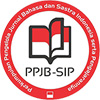Sikap Bahasa Penutur Bahasa Bajo di Kota Ternate: Tinjauan Sosiolinguistik
Sari
Artikel ini mendeskripsikan sikap bahasa komunitas Bajo yang menetap di Kota Ternate terhadap bahasa mereka sendiri yakni bahasa Bajo dan faktor faktor yang memengaruhi sikap bahasa mereka. Metode dalam pengumpulan data di lapangan adalah deskriptif kualitatif dengan teknik observasi, wawancara dan dokumentasi, penganalisisan data dilakukan bersamaan dengan pengumpulan data untuk memudahkan validasi data lapangan. Hasil penelitian diperoleh data bahwa sikap bahasa komunitas Bajo yang ada di kota Ternate adalah Positif, di mana penutur Bahasa Bajo masih terlihat menggunakan bahasa Bajo di berbagai kesempatan, baik dalam keseharian di rumah maupun dalam kegiatan sosial komunitas Bajo. Sikap positif ini ada karena rasa bangga, setia dan sadar bahwa bahasa Bajo bagi penutur bahasa bajo adalah identitas diri mereka. Adapun faktor yang paling berperan penting dalam sikap ini adalah faktor keluarga di mana ikatan keluarga sangat dominan dalam lingkungan sosial, dengan demikian bahasa Bajo tetap menjadi bahasa pengantar antar anggota keluarga sebagai penutur asli.
Kata kunci : sikap bahasa, sosial, penutur asli.
Abstract
This article describes the language attitudes of the Bajo community who live in Ternate City towards their own language, namely Bajo language and the factors that influence their language attitudes. The method in collecting data in the field is descriptive qualitative with observation, interview and documentation techniques, data analysis is carried out simultaneously with data collection to facilitate validation of field data. The results obtained data that the language attitude of the Bajo community in the city of Ternate is positive, where Bajo language speakers are still seen using the Bajo language on various occasions, both in daily life at home and in Bajo community social activities. This positive attitude exists because of a sense of pride, loyalty and awareness that the Bajo language for Bajo language speakers is their identity. The most important factor in this attitude is the family factor where family ties are very dominant in the social environment, thus Bajo language remains the language of instruction between family members of native speaker.
Keywords; language attitude, social, native speakerÂÂ
Teks Lengkap:
PDFReferensi
Ahmad et al 2018 “Pemertahanan Bahasa Ternate Pada Masyarakat Multilingual Ternate†Surakarta. UNS.
Chaer, Abdul dan Leoni Christina. 2004 Sosioliguistk: Perkenalan Awal. Jakarta:Rineka Cipta
Crystal, David. 2000. The Cambridge Encyclopedia of Language. USA : ambridge University Press.
Dorian, Nancy C.1981. Language Death: The life Cycle of a Scottish dialect.Philadelphia: University of Pensylvania Press.
Fasold, Ralph. 1984.The sociolinguistics of society. Oxford: Basil Blackwell
Fishman, Joshua A. 1971. The Sociology of Language: An Interdiciplinary Social Science Approach to Language in Society. Paris: The Hague.
Hoffman, C. 1991. An Introduction to bilingualism. London: Longman.
Holmes, Janete. 1992. An Introduction to Sosiolinguistics. USA: Longman
Grimes, Barbara F. 2001. Kecenderungan Bahasa untuk Hidup atau Mati Secara Global, Sebab, Gejala, dan Pemulihan untuk Bahasa-Bahasa yang Terancam Punah†dalam PELBBa 15. Jakarta: Pusat Kajian Bahasa dan Budaya Unika Atma Jaya. 24-25 Juli 2001.
Garvin, P.L. Mathiot M. 1972. The Urbaization of Guarani Language. Problem in Language and Culture, dalam Fishman, J.A. (Ed) Reading in Tes Sosiology of Language, Mounton. Paris–The Hague.
Grimes, Barbara A. (ed). 2002. Ethnologue: Languages of the World. Dallas, Texas: SIL International
Ibrahim, Gufran A. 2009. Metamorfosa Sosial dan Kepunahan Bahasa. Ternate: LepKhair
Paulston,Christina B. 1986. Dinamic of Language Maintenance Among Lingusitics. Australia
Romaine, Suzanne. 2002. “The Impact of Language Policy on Endanger Languages†Internasional Journal on Multicultural Societies (online,Vol.4,no.2)
DOI: https://doi.org/10.33387/tekstual.v19i1.3087
Refbacks
- Saat ini tidak ada refbacks.
Tekstual terindeks oleh:



